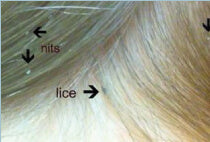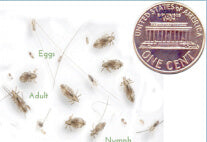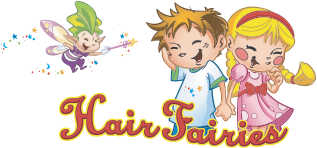Do’s & Don’ts
Let’s establish some facts about head lice!
Head lice are:
- 1 of the top 3 reasons kids miss school.
- Extremely common! Between 6-12 million U.S. kids 3-11 years old get head lice each year.
- Not dangerous, but are contagious (and annoying).
- NOT signs of unwashed or unclean hair. They thrive in clean hair!
- Unable to jump, fly or swim.
- Unable to live on your pets.
- Unable to live in your environment (couch, carpet, furniture, pillow, sheets, mattress, car, movie theater, airplane).


Lice Do’s:
- Use proven, manual head lice removal methods and all-natural products.
- Daily wash only the clothing, bedding, brushes, and hair accessories used during your head lice infestation.
- Screen your entire household as soon as one child has head lice.
- Tell your school and friends you have head lice to avoid cross-pollination. Spread the word, not the lice!
- Relax and take a deep breath!
Lice Don’ts:
- Don’t replace your furnishings (including your mattress).
- Don’t wash your entire wardrobe.
- Don’t use toxic products or ineffective home remedies for head lice. Some over-the-counter shampoos can be highly toxic (especially for kids), yet many strains of lice are immune to the chemicals.
- Don’t cut your hair or pour olive oil, mayonnaise, Listerine, tea tree oil, vinegar, Vaseline, or gasoline on it — these methods don’t work. Some are dangerous; others are better used as a preventative measure or in tandem with a lice comb.
- Don’t panic! Hair Fairies is here to help! Call us at 877-285-0069.
EGGS
Head lice eggs (called “nits”) are hard to see and often confused for dandruff or hair spray droplets. Nits can be found at the base of the hair shaft nearest the scalp (1).
NYMPHS
The egg hatches to release a nymph (2). The nit shell then becomes a more visible dull yellow and remains attached to the hair. Nymphs mature after three molts (3, 4) and become adults about seven days after hatching.
ADULTS
The adult louse has six legs, each with a claw, and is tan to grayish-white (5). In people with dark hair, the adult louse will appear darker. Adults multiply quickly, laying up to eight eggs a day, and living up to 30 days on someone’s head. A louse can go two days without blood meals.
If you suspect someone in your family has head lice, act quickly to prevent these parasites from spreading!
Come into a kid-friendly Hair Fairies salon, or call us, and we will be more than happy to help.
We are determined to help you manage your head lice. Our number one mission at Hair Fairies is to help families help themselves.
We have packed more than a decade of experience into our free, step-by-step tutorial. In this and our other how-to videos, you will learn how to identify a head lice egg and adult head lice. You will also get easy-to-follow tips on head lice treatment and prevention products.
- Step-by-Step Tutorial – Head Lice Treatment: The Safe and Natural Way
- Get Rid of Head Lice: An Introduction to Hair Fairies Products
- Hair Fairies: the Head Lice Helpers
If you find head lice on your child:
- Notify your school, friends, and family immediately to help curtail spread.
- Wash all affected clothing with Hair Fairies Laundry Detergent.
- Use Hair Fairies all-natural Nit-Zapping™ Clenz Cream and Nit-Zapping™ Lice Comb to remove lice, then treat with Nit-Zapping™ Clenz Shampoo. Or come to a Hair Fairies salon near you.
The sooner head lice are detected, the better. Quick action and preventive measures can minimize their spread and chance of returning.
Parents Preventative Measures:
Screen your child for head lice once a week.
Be extra vigilant after returning from any school, camp, or holiday break (places where outbreaks tend to occur more often).
Promote lice screenings at your school/camp — they will help limit outbreaks.
If you hear of a lice outbreak:
Keep long hair pulled back in a braid or ponytail. (Long hair is more susceptible to lice.)
- Apply Hair Fairies Nit-Zapping™ Clenz Prevention Oil onto scalp.
- Spray Hair Fairies Nit-Zapping™ Lice Repellant Spray on your non-washables at home, such as your kids’ backpacks and sports caps.
If you find head lice on your child:
- Notify your school, friends, and family immediately to help curtail spread.
- Wash all affected clothing with Hair Fairies Laundry Detergent.
- Use Hair Fairies all-natural Nit-Zapping™ Clenz Cream and Nit-Zapping™ Lice Comb to remove lice, then treat with Nit-Zapping™ Clenz Shampoo. Or come to a Hair Fairies salon near you.
- Screen your school/camp for lice once a month.
- Remove any negative stigma attached to contracting head lice by educating families and staff, and by promoting speedy notification of parents.
- Use Hair Fairies Nit-Zapping™ Lice Repellant Spray in your school/camp environment, such as on stuffed animals, pillows, uniforms, and caps.

